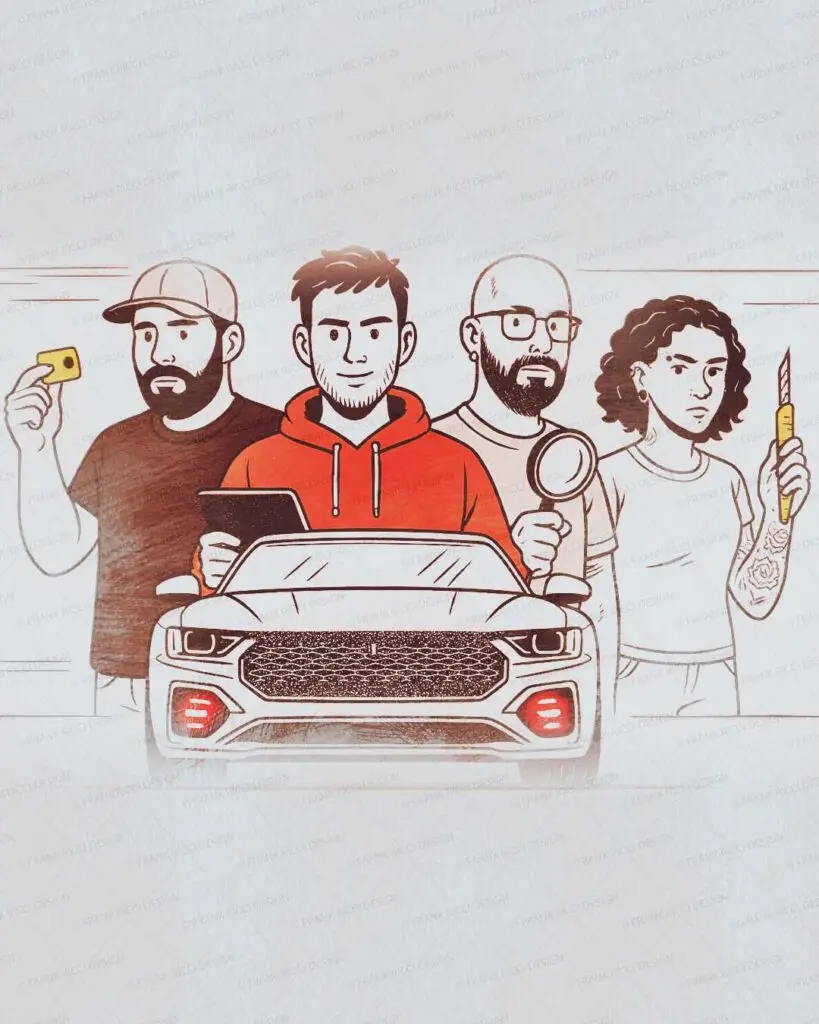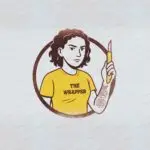Who Does What in a Car Wrapping Project?

1. Introduction – A good wrap is a team effort
When you see a perfectly wrapped car — with aligned graphics, clean details, and strong visual impact — you might think it’s all thanks to the wrapper or the designer. In reality, it’s the result of teamwork, where multiple people play distinct roles.
In this article, we break down who does what in a professional car wrapping project, and why collaboration between the designer, client (yes, you), wrapper, and print operator is essential for success.
2. The Client – The spark that starts it all
 Everything begins here. The client can be a private owner, a brand, or a business that decides to wrap a vehicle for visibility, customization, promotion, or pure aesthetics.
Everything begins here. The client can be a private owner, a brand, or a business that decides to wrap a vehicle for visibility, customization, promotion, or pure aesthetics.
That’s the ideal situation. But often — and this is rarely talked about — the decision comes through someone else: an advisor, a marketing lead, or even a friend. Sometimes the client is just the messenger. Not everyone has a clear vision from day one.
Ideally, the client’s main tasks are:
- Defining the goal of the project
- Clearly expressing needs and expectations
- Sharing preferences, references, and technical limits (brand colors, materials, etc.)
A well-informed client makes everything easier. A less experienced client should trust the professionals — that’s us.
3. The Designer – The author of the vision
 The designer is the creative mind behind the visuals — and often also the one who speaks directly with the client, conducts interviews, and ensures the brief is respected. They don’t just create a “cool graphic”; they study the proportions of the vehicle, its use, and the wrapping process to create a 3D artwork that communicates what the client wants.
The designer is the creative mind behind the visuals — and often also the one who speaks directly with the client, conducts interviews, and ensures the brief is respected. They don’t just create a “cool graphic”; they study the proportions of the vehicle, its use, and the wrapping process to create a 3D artwork that communicates what the client wants.
Their responsibilities:
- Translate the client’s needs into a visual concept
- Adapt it technically to the vehicle (panels, cutlines, scaling)
- Anticipate visual effects and application challenges
- Deliver final print files ready for execution
A great designer thinks like a wrapper and listens like a strategist. They don’t just “stay on screen.”
4. The Printer – The bridge between digital and real
 The printer is the person or service responsible for producing the physical vinyl from the design files. This can be the wrapper themselves or an external print shop.
The printer is the person or service responsible for producing the physical vinyl from the design files. This can be the wrapper themselves or an external print shop.
Many professional wrappers own their own printers and plotters and manage the entire process in-house. Others (especially those who do fewer custom wraps) rely on specialized print centers.
Either way, the print technician must:
- Double-check all files before printing
- Use high-quality film and inks compatible with the project
- Laminate and trim the prints accurately
- Coordinate with the wrapper for timing and logistics
When the roles of designer, printer, and wrapper are handled by different people, good communication is crucial — but it can slow things down and increase costs slightly.
5. The Wrapper – The hands that make it real
 The wrapper isn’t just the person who applies vinyl. They often manage the print files, inspect quality, prep the vehicle, and physically transform a digital concept into a real, drivable design — across curves, handles, bumpers, and complex surfaces. Then they clean, reassemble, and deliver the car.
The wrapper isn’t just the person who applies vinyl. They often manage the print files, inspect quality, prep the vehicle, and physically transform a digital concept into a real, drivable design — across curves, handles, bumpers, and complex surfaces. Then they clean, reassemble, and deliver the car.
Their tasks:
- Know the vehicle (or provide accurate measurements)
- Understand the design and report critical areas (overlaps, distortions, cuts)
- Manage the print process and inspect materials
- Apply the wrap precisely, following the designer’s guidelines
- Photograph the final result and deliver it to the client
A perfect design means nothing if printed or applied poorly. The wrapper’s skill completes the project.
6. Conclusion – One project, four roles
Wrap design isn’t just graphics, and it’s not just vinyl. It’s a collaborative process where:
- The client starts the fire
- The designer gives it vision
- The wrapper brings it to life
- The printer ensures technical quality
When everyone does their part and communicates, the result speaks for itself — literally.
Ready to bring your wrap project to life?
Want to explore the differences between T1, T2, and T3? Click here ⧉
